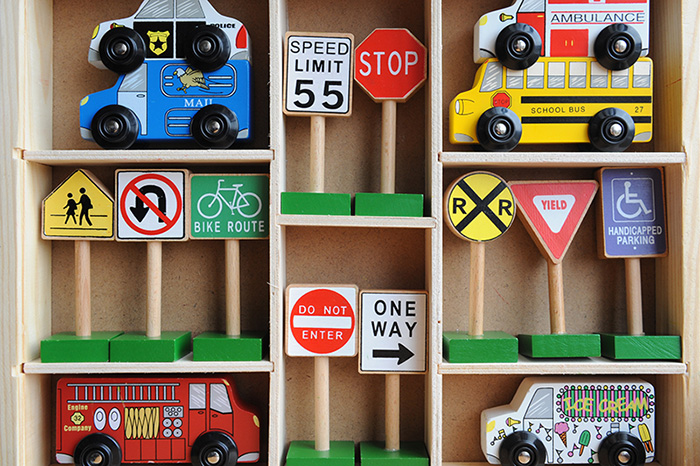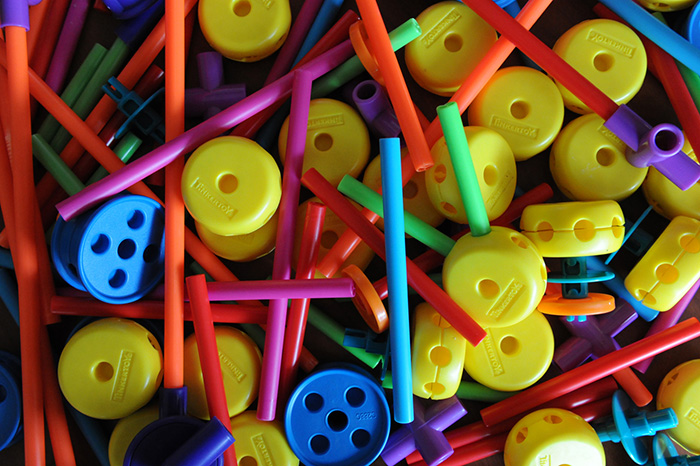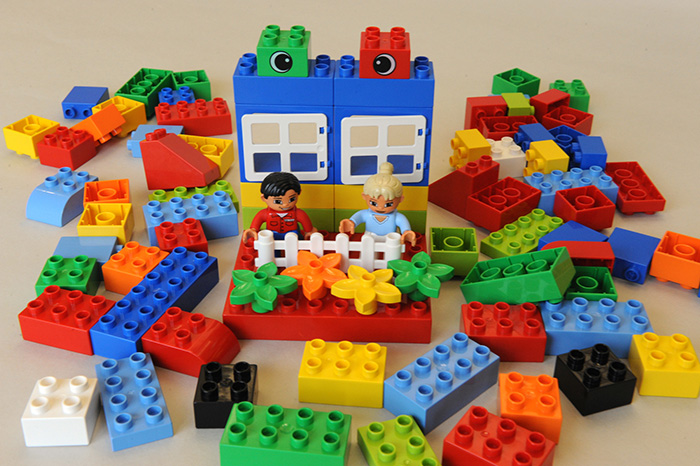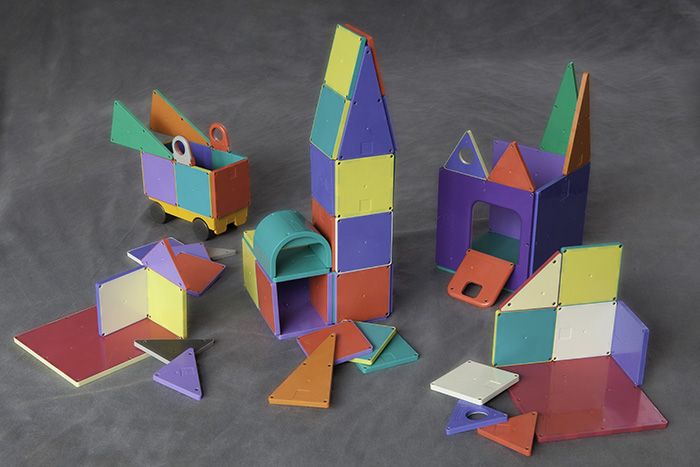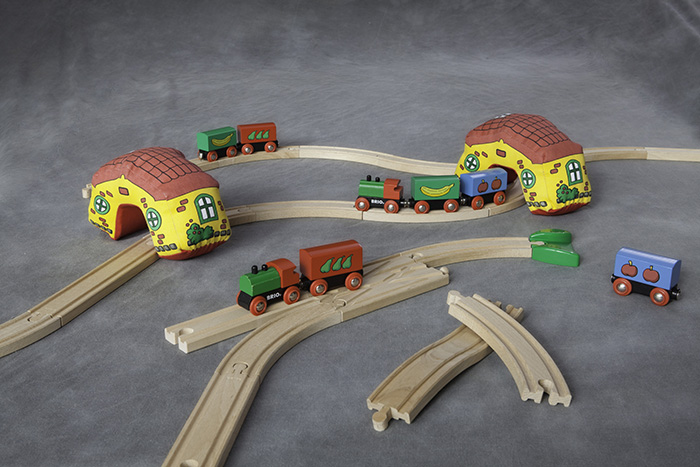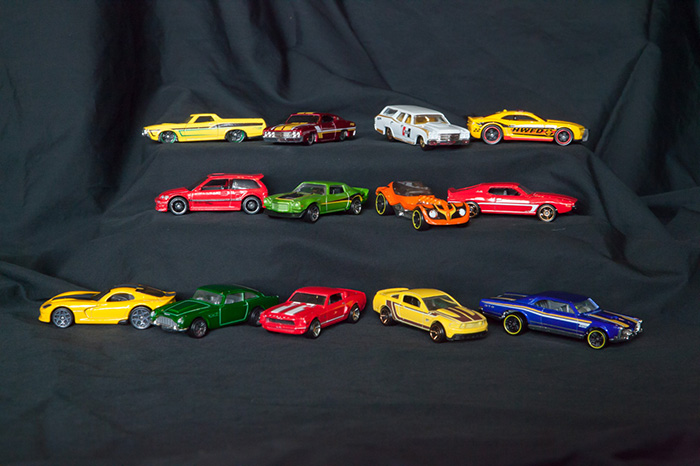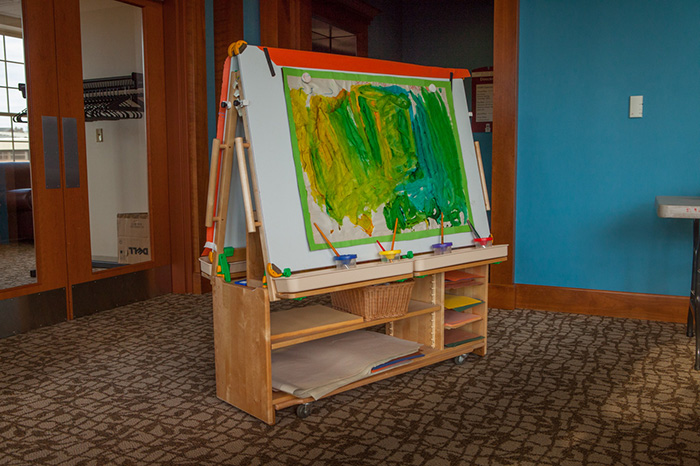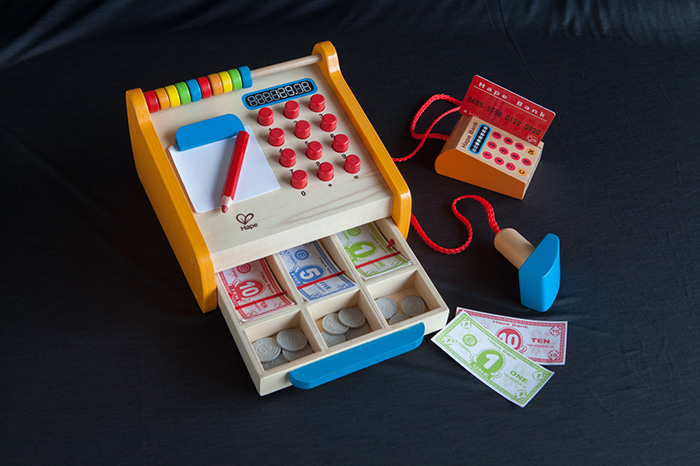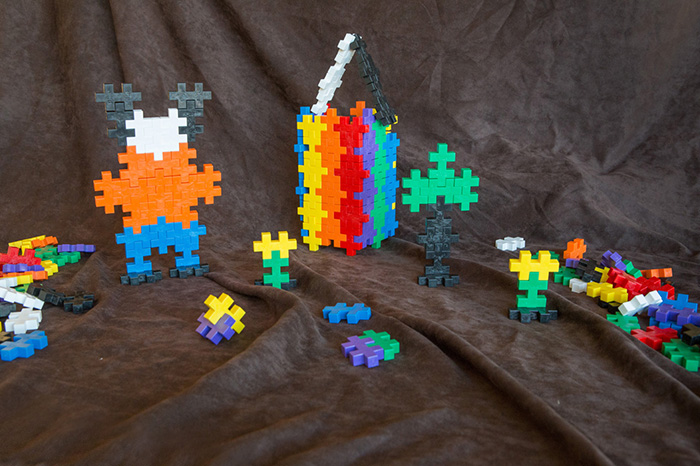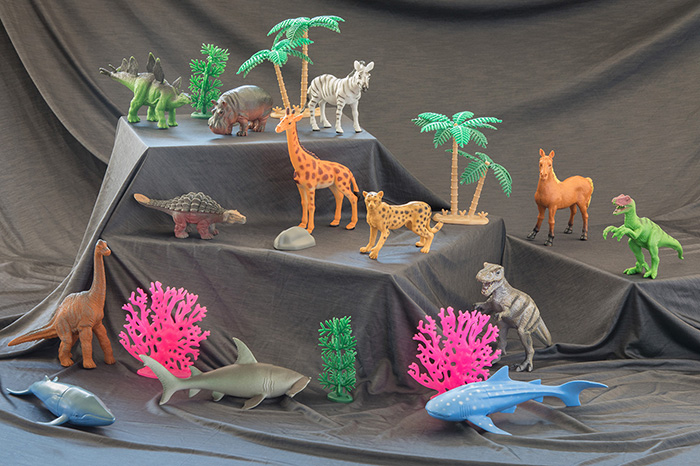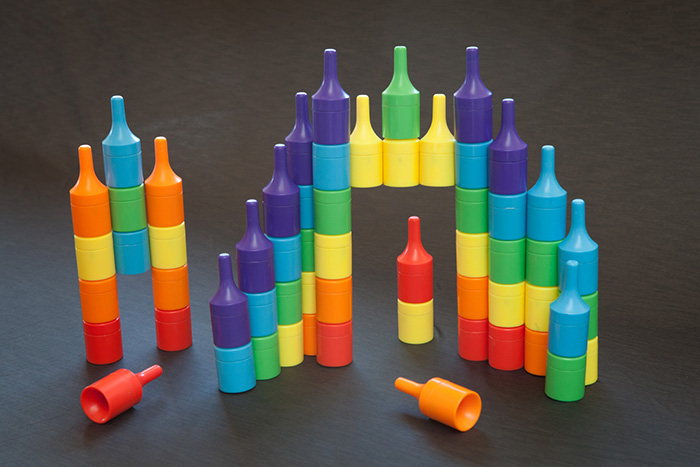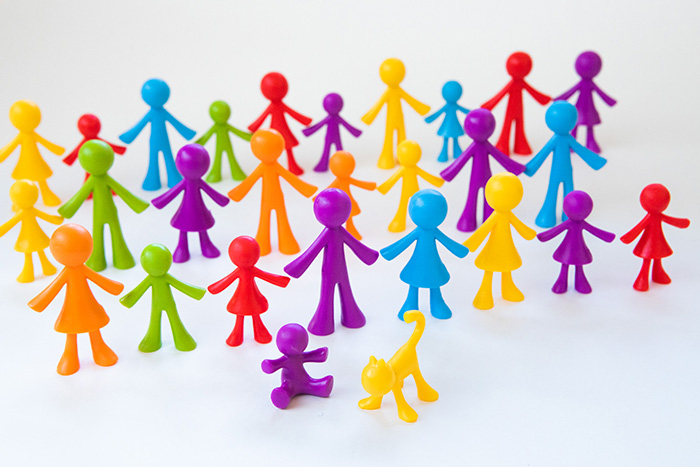- Apply
- Visit
- Request Info
- Give
10 Years of TIMPANI: Annual Study Investigates the Paradox of Play
Written by Michael Rouleau
Published on April 01, 2020
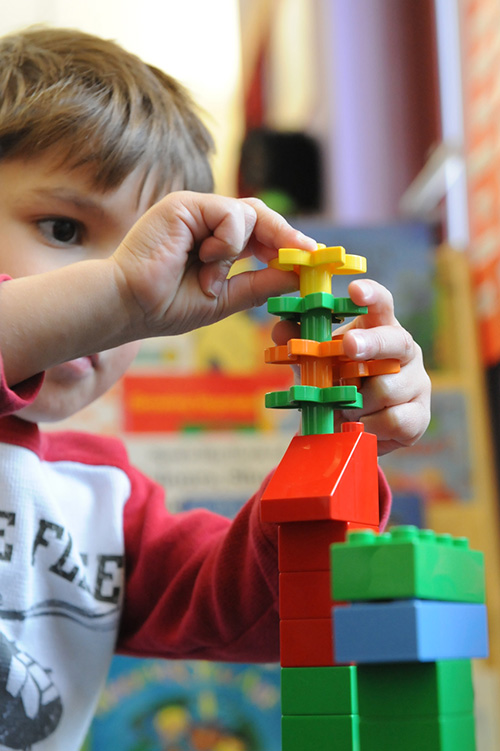 For millennia, toys have elicited joy and laughter in children. They are also fundamental to a young child’s intellectual and social development. In this modern world of smart phones, smart houses and smart automobiles, surely the best toys for a preschooler are “smart toys” — full of microchips, long-life batteries, robotics and other technology.
For millennia, toys have elicited joy and laughter in children. They are also fundamental to a young child’s intellectual and social development. In this modern world of smart phones, smart houses and smart automobiles, surely the best toys for a preschooler are “smart toys” — full of microchips, long-life batteries, robotics and other technology.
Not so, say researchers at Eastern Connecticut State University. For the past 10 years, the TIMPANI study – Toys that Inspire Mindful Play and Nurture Imagination — has annually reaffirmed a fundamental if not paradoxical finding: the simplest toys support the most complex play. Based on careful observation and empirical data, the results are clear — children’s cognitive, social and language skills are best developed when they play with toys that allow them the greatest freedom of imagination.
December 2019 marked the conclusion of the 10th annual TIMPANI study, which investigates how young children learn as they play with toys in natural settings. Each year, a different selection of toys is placed in preschool classrooms at Eastern’s Child and Family Development Resource Center. Student researchers use hidden cameras to videotape children playing with the toys, then code the footage according to the study’s evaluation rubric, which assesses how well each toy inspires children’s problem-solving, cooperation with peers, creativity and use of language.
Since its inception in 2010, 26 Eastern students have participated in the study, a program of the Center for Early Childhood Education (CECE). Over the 10 years of the study, they have reviewed the quality of play stimulated by nearly 100 toys, annually crowning those achieving the highest score as the TIMPANI Toy of the Year. Another 11 student videographers have recorded the research activities and produced a composite video each year to document TIMPANI findings.
“TIMPANI is an outstanding example of students conducting faculty-sponsored research of the highest level,” said Eastern President Elsa Núñez. “As much as I look forward to the annual unveiling of the TIMPANI Toy of the Year, the research methodology continues to impress me — video-based observations assessed against a carefully crafted rubric. What’s most compelling are the consistent findings of the study over the past decade — that open-ended, ‘low-tech’ toys have the greatest value in advancing the skills and development of young children.”
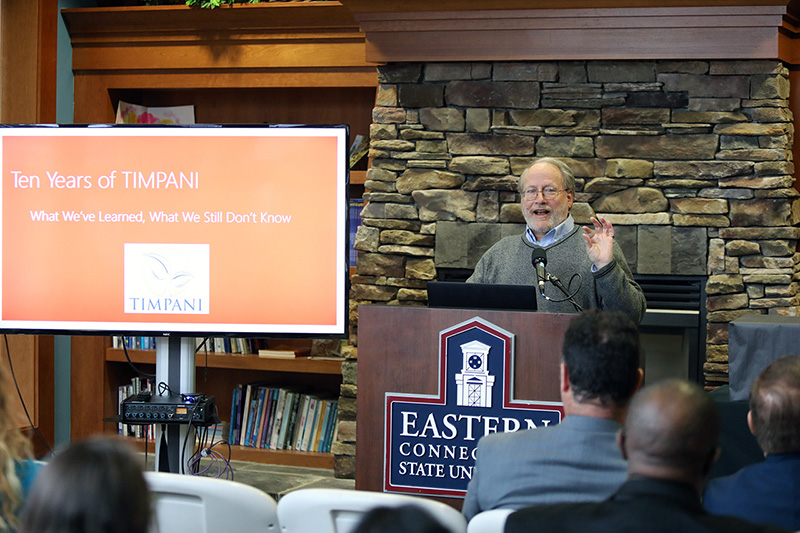
Jeffrey Trawick-Smith, co-principal investigator and former Phyllis Waite Endowed Chair of Early Childhood Education at Eastern, speaks at the 2019 TIMPANI press conference.
In addition to being simple and nondescript, TIMPANI researchers have found that two types of toys consistently produce high-quality play among children of all gender and socioeconomic backgrounds: construction and replica-play toys.
Construction toys include such classics as basic wooden blocks, Tinkertoys, Lincoln Logs and Duplo Blocks. Replica-play toys are miniature real-world objects, like Hot Wheels cars or the 2019 TIMPANI Toy of the Year, “Family Counters,” which is a simple set of plastic people and cats of varying size and color.
“These are toys that no home or classroom should be without,” said Jeffrey Trawick-Smith, principal co-investigator and professor emeritus of education. Of construction toys, he said, “As children play, they are creating and testing designs and rebuilding structures. Construction toys are really simple engineering tools for young children.”
Speaking generally of toys that foster creativity and imagination, he added, “The quality of children’s dramatic play is one of the best predictors we have of later school success. When children pretend, they engage in symbolic thought, use complex language and regulate their own behaviors in mature ways.”
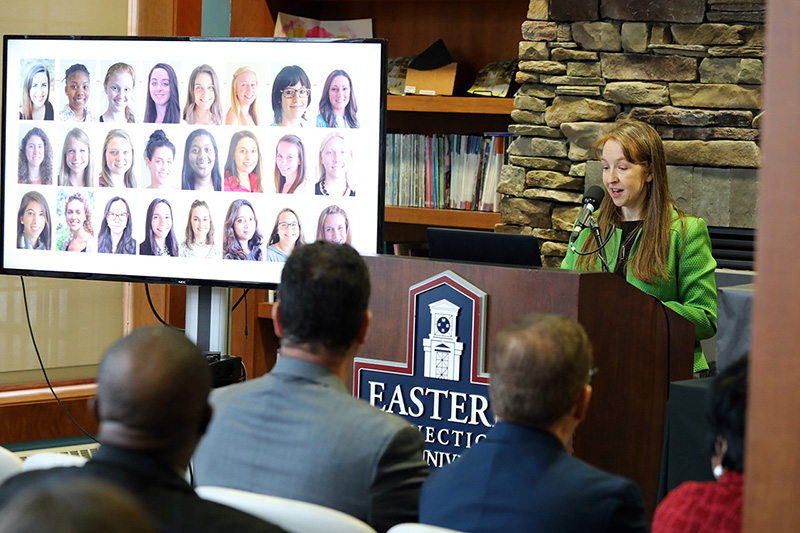
Julia DeLapp, co-investigator and director of the CECE, acknowledges the numerous undergraduate researchers who have participated in the study over the years.
Like adults, children are sometimes attracted to flashy toys that might not promote development as well as other less popular toys. Talking dolls are an example. “Children use less language when toys do the talking for them,” said Trawick-Smith, adding that talking dolls may elicit higher-quality play with the batteries removed.
Principal co-investigator and CECE director Julia DeLapp explained: “It’s important for families to know that they don’t need to purchase expensive, elaborate toys with a lot of bells and whistles on them. Simple is often better because children have to use more of their own imagination.”
Two-year TIMPANI researcher Alyssa Zebrowski ’15, a reading interventionist at Black Rock School in Bridgeport, CT, agrees. “The fancier-looking toy might draw the attention of children more easily, but the play with those toys is typically less extensive and creative than that of a simple toy.”
The highest-scoring toys during Zebrowski’s studies (2014 and 2015) were an art easel and a wooden cash register. “Simple, classic toys typically provide more opportunity for a variety of play scenarios, not just one suggested use, which results in more quality play.”
From student to teacher, TIMPANI’s lasting impact
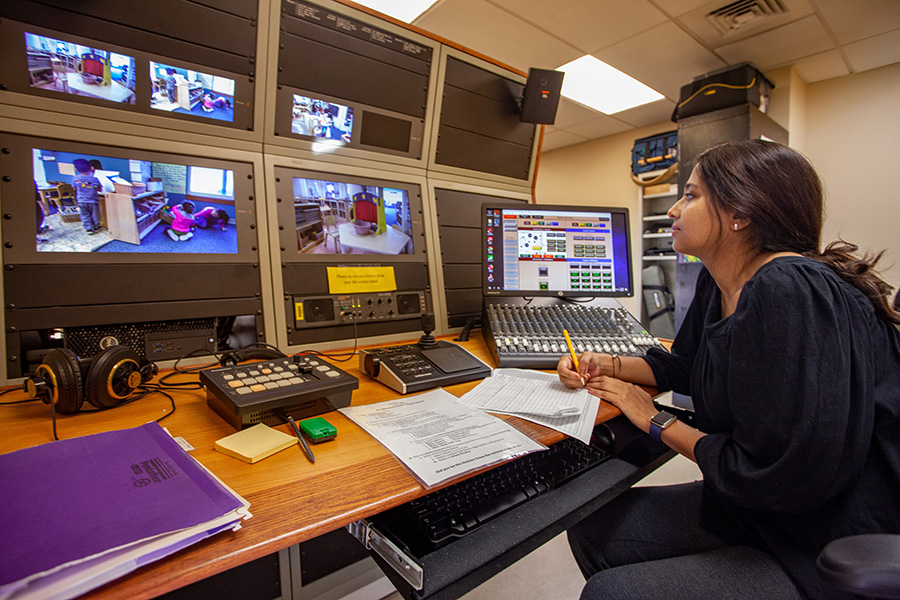
The insights gained through the TIMPANI toy study have revolutionized students’ understanding of the role of teachers, and play, in the classroom. In many cases, they’ve found that less is more.
“TIMPANI taught me the importance of taking a step back and observing the children’s minds taking them on an adventure,” said 2019 researcher Alyssa Barry ’20. “I once felt that I had to be hands on and engaging constantly to be a successful teacher. It’s through this study and my early childhood classes that I’ve witnessed the positive interactions among children when adults aren't around to interfere.”
“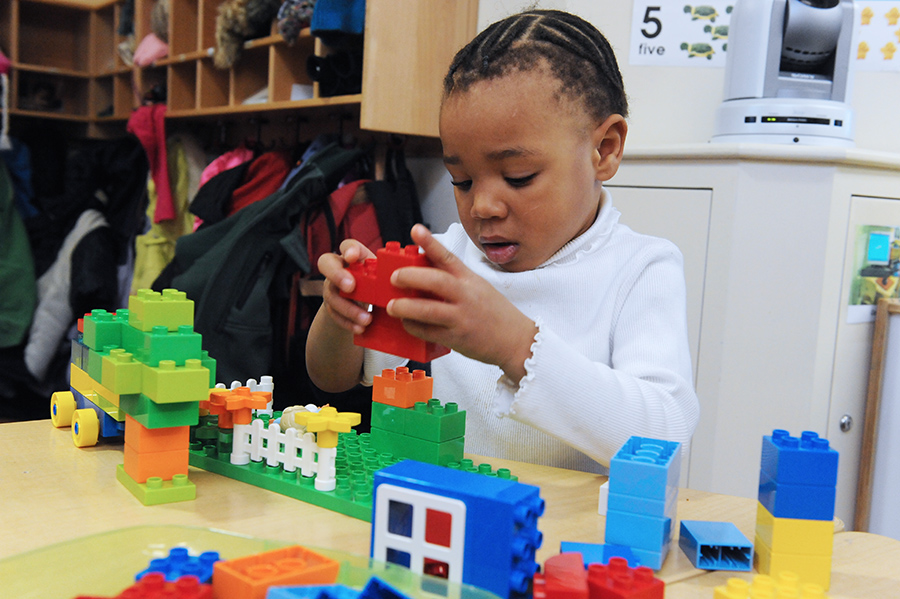 Observing and studying children's play has really opened my eyes to the role of the teacher in facilitating quality play,” said Allison Lundy ’20, who participated in the 2018 and 2019 studies.
Observing and studying children's play has really opened my eyes to the role of the teacher in facilitating quality play,” said Allison Lundy ’20, who participated in the 2018 and 2019 studies.
“Teachers need to take the time to get to know their students on an individual level because children require different amounts of guidance or scaffolding when playing with a new toy. Teachers should observe how children interact and play with toys and use these observations to guide future discussions and instruction.”
Many of the students who have participated in TIMPANI have now embarked on teaching careers and continue to incorporate what they’ve learned into their own classrooms.
Chamari Davis ’14 is a third-grade teacher at DREAM Charter School in New York City. “I promote play by having a variety of play breaks in my instructional practice, having students explore content and practice skills through games, problem-solving with manipulatives and dramatic retelling. I aim to truly make learning an adventure, and my research at Eastern showed me how to foster joy with cognitive development in the classroom.”
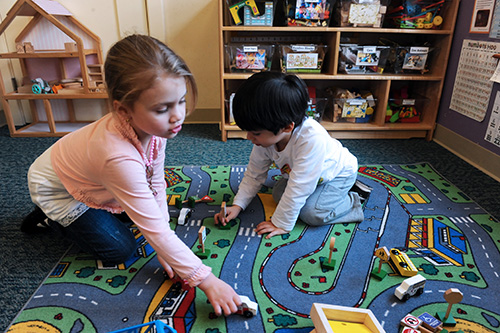 Special education preschool teacher Marley Koschel ’13 concurs. “I still use the information I gained through TIMPANI when choosing toys and activities for my preschool classroom. I always think about how much imaginative and investigative play the toy will foster.” Koschel stays abreast with the study’s findings, adding that past Toys of the Year – Tinkertoys and Lego Duplo Blocks — are two classroom favorites.
Special education preschool teacher Marley Koschel ’13 concurs. “I still use the information I gained through TIMPANI when choosing toys and activities for my preschool classroom. I always think about how much imaginative and investigative play the toy will foster.” Koschel stays abreast with the study’s findings, adding that past Toys of the Year – Tinkertoys and Lego Duplo Blocks — are two classroom favorites.
Kim DePaolis ’15 is an early childhood education interventionist for Newington Public Schools. “My time spent examining the toys and the children's interactions with them built a repertoire for my entire understanding of child development. I learned how to allow for children to navigate play experiences meaningfully and how to use that student-driven play to best help the student learn and grow.
“The idea that play can offer so many critical pieces necessary for young children's development has carried me through my teaching career thus far and is the driving force behind my instruction.”
###
Questions for future TIMPANI researchers include the role of teachers in children’s play; which toys promote mixed ethnic and gender play; what toys are best for children with disabilities; and what can be done to make toys more accessible for children from low-income families.



